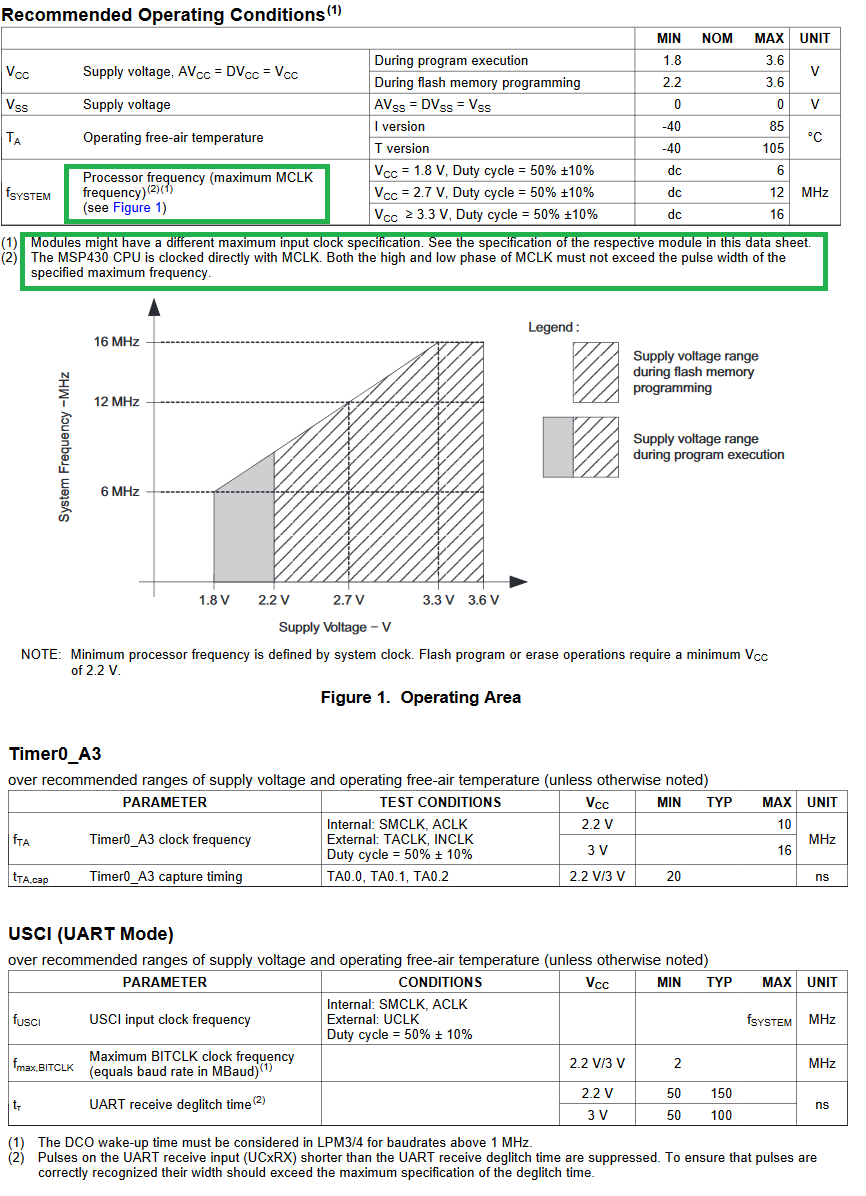Hello,
The MSP430F2132 datasheet seems contradictory as figure 1 shows that the 16 MHz operation is supported in the 3.3-3.6V range, when the last line of the Calibrated DCO Frequencies - Overall Tolerance on page 29 tells that 16 MHz is supported from 3.0 to 3.6V. Which voltage range should one consider?
Best regards,
François.


